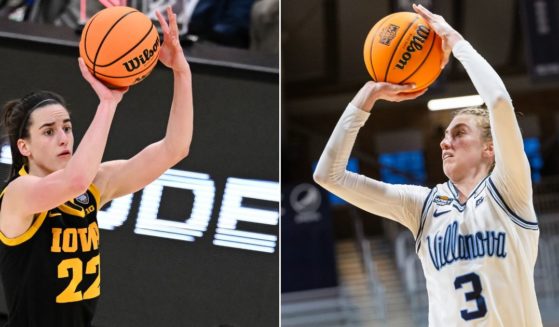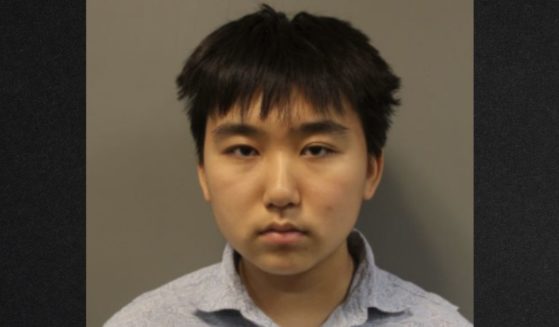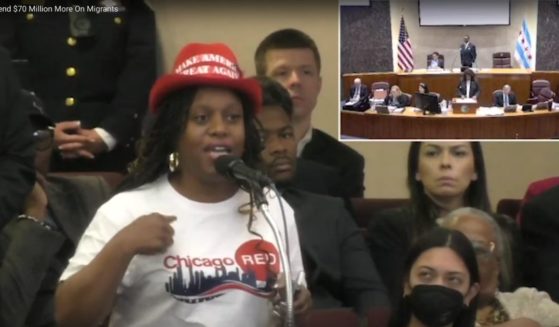MLB To Start Experimenting with Robot Umpires
Major pro sports are, by their very nature, resistant to making radical changes to the way the game is played, since doing so risks upsetting purist fans, making it more difficult to compare players across eras, or just plain fixing what isn’t broken.
But in recent years, sports have been using preseason and minor league games to test a variety of rule changes that, when they prove to be beneficial to both the competitiveness and the entertainment value of the game, soon find themselves implemented and “part of the game” at the top level.
Major League Baseball has partnered with the independent minor Atlantic League to test such innovations, and one of them could result in another American job lost to automation.
That’s right — baseball is testing out robot plate umpires.
MLB announced Friday that coming soon to a baseball field near you, a new TrackMan radar system, similar to the PITCHF/x system used by TV broadcasts and statisticians since 2006, will be used to judge balls and strikes.
Gone will be the days of the amorphous strike zone that looks more like a gerrymandered congressional district than a rectangle.
Besides umpires, whose professional pride is predictably damaged by the notion of robot replacements, one other group is raising objections: catchers.
Cubs outfielder and occasional catcher Kyle Schwarber offered his take on the threat robots pose to the dark arts practiced beneath a mask and chest protector behind home plate during an appearance Tuesday on the “Bernstein and McKnight Show” on WSCR-AM in Chicago.
“I feel like the art of catching will go away there,” Schwarber said. “I think catching is an art. You have to be able to read pitches, get under them, get around them, things like that. But then once, if that computer strike zone comes in, that’s going to go away. A catcher can just sit on a chair back there and just catch it wherever it’s at.”
On the other hand, not having to frame the pitch might lead to fewer passed balls, so every cloud does indeed have a silver lining.
Robot umps aren’t the only change coming to baseball, at least not if the Atlantic League experiments all bear fruit.
For one thing, the league is also going to move the pitcher’s mound back two feet, to 62 feet 6 inches. On the one hand that ruins the symmetry of a baseball field — the mound will no longer be cleanly lined up between first and third base the way it’s been since the distance was standardized in 1893 — but on the other hand it means the batters will have a split second longer to read and react to a pitch, which is likely to increase the number of balls in play and cut down on strikeouts.
Strikeouts, walks and home runs — the “three true outcomes” in modern baseball parlance since they involve only the pitcher, the catcher and the batter — cause some fans to complain (maybe not so much about the home runs) because it basically means seven guys on the baseball field can stand around and pick dandelions like they’re bored kids in Little League. Balls in play that stay in the ballpark mean there is action happening among the fielders.
The Atlantic League will also be the test bed for banning the infamous “shift,” where at times all four infielders behind the pitcher would stand to the right of second base to field batted balls from left-handed pull hitters.
The new rule will, like rules about the balanced offensive line in football, require at least two fielders on either side of the axis that runs through second base between dead center field and home plate.
This, again, will presumably lead to more action, as with only the first and second baseman on that side, a hit by a left-handed pull hitter will be more likely to sneak into right field for a base hit.
Another rule under consideration? The three-batter-per-reliever rule, requiring a relief pitcher to face at least three batters — or reach the end of the inning, whichever comes first — before he may be substituted. This will put an end to the parade of stoppages and pitching changes late in games and also effectively kill the role of the “LOOGY” (“left-handed one-out guy”), as baseball writers have playfully termed the specialist brought in to get one left-handed batter out before yielding the mound.
Rounding out the list of rule changes include shortening the time between innings and the time allowed for pitching changes from 125 seconds to 105, making the bases bigger (from 15 inches across to 18, in an effort to improve player safety on everything from running out a grounder to avoiding a takeout slide on a double play) and banning mound visits for reasons other than pitching changes or injuries.
Morgan Sword, who stands to fall on his name if fans revolt against the changes, commented on the plan.
The senior vice president of league economics and operations for MLB said in a statement, “This first group of experimental changes is designed to create more balls in play, defensive action, baserunning and improve player safety. We look forward to seeing them in action in the Atlantic League.”
Earlier today, @MLB and the @AtlanticLg announced the experimental playing rules and equipment that will be in place during the 2019 Atlantic League
Championship Season. pic.twitter.com/3pZlHeJH8e— MLB Communications (@MLB_PR) March 8, 2019
As for robot umpires, anyone who’s played a baseball video game is already used to the black-and-white computerized world of robots who by their programming never miss calls, and tennis has used laser technology to call balls out or in for years, so this is far from a brave new world of untested technology.
And indeed, if you’re in the mood to see baseball with a twist that’s a bit different from what you’re used to, and you live in or near one of the eight cities that have Atlantic League teams, you can see the cutting edge of major league innovation and bring the kids along for the night out.
Truth and Accuracy
We are committed to truth and accuracy in all of our journalism. Read our editorial standards.











